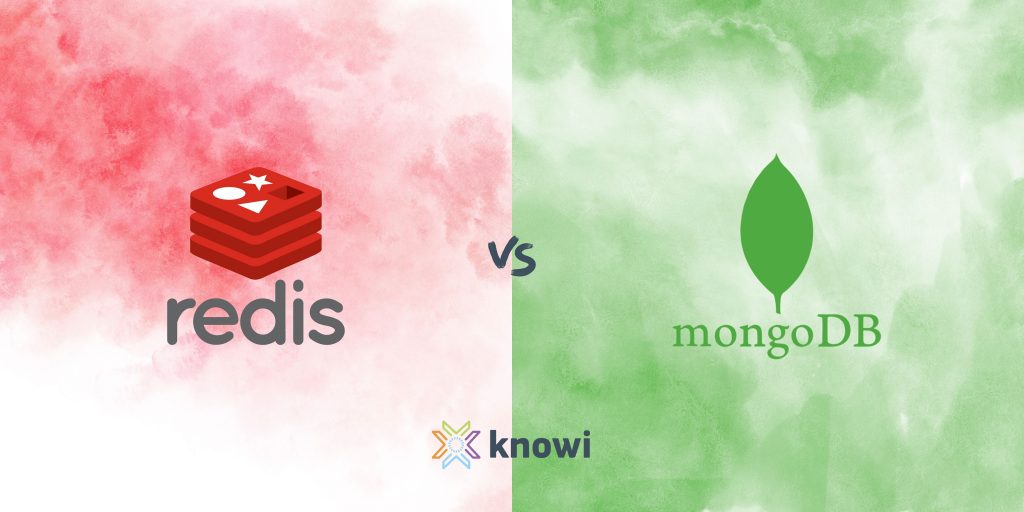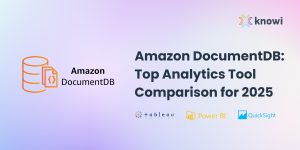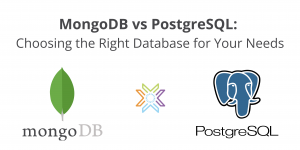In today’s data age, selecting the right database for your application is crucial for ensuring optimal performance, scalability, and data management. Redis and MongoDB are two popular NoSQL database choices in today’s modern data management world.
Both databases offer comparable results in ease of use and speed and are open-source and scalable. However, each database has its unique strengths that are suitable for different use cases.
In this article, we explore the strengths, weaknesses and differences between Redis and MongoDB to help you determine which database is more suitable for your project.
What is Redis?
Redis is an in-memory, multi-model database famous for its sub-millisecond latency. Salvatore Sanfilippo created Redis in 2009 based on the idea that a cache can also be a durable data store. At this time, apps like Twitter grew exponentially and needed a way to deliver data to their end users faster than a relational database could handle.
Redis, which means Remote Dictionary Server, changed the database game by creating a system where data is always modified or read from the main computer memory as opposed to the much slower disk. At the same time, it stores its data on the disk so it can be reconstructed as needed, meaning the database is fully durable, supporting things like snapshots and backups. Some of the most heavily trafficked sites in the world, like Twitter, Pinterest, and Craigslist, adopted Redis.
How does Redis work?
Every data point in the database is a key followed by one of many different data structures like a string, list, hash, or stream, allowing you to store data naturally, just like you would with your favorite programming language, as opposed to squeezing it into a bunch of tables or JSON documents. Interacting with the database is handled with a simple set of commands like SET followed by a key and value to create data, then GET followed by a key to read data.
Historically, Redis has been described as a key-value store and is often used as a cache to make relational databases faster at scale. Today, Redis is what you would call a multi-model database, supporting a variety of different database paradigms with add-on modules that you can opt into as needed. If your data contains relationships, bring in RedisGraph and query it with Cypher. Or use the JSON module to structure your data as a hierarchy, just like a document-oriented database. Then, use the Search module to turn your database into a full-text search engine. It even has modules for AI workloads, time-series data, and more.
Advantages of Redis:
- Sub-millisecond latency and high throughput for real-time applications.
- Supports versatile data structures like strings, lists, sets, and more.
- Offers snapshotting and AOF for durability and recovery.
- Clustering for horizontal scalability across multiple nodes.
- Rich command set for various use cases.
- Replication for high availability and data redundancy.
- Modular architecture with features like RedisGraph, RedisJSON, and RedisAI.
- Large, active community with extensive documentation and libraries.
Disadvantages of Redis:
- High RAM requirements, costly for large datasets.
- Disk writing can impact performance.
- Managing clusters can be complex.
- Not designed for complex queries or joins.
- Performance-focused default config risks data loss.
- Can bottleneck CPU-bound operations.
- Lacks rich types and relationships of relational databases.
- Advanced features require in-depth knowledge.
What is MongDB?
MongoDB is the world’s most advanced and popular document-oriented database. It was created in 2007 after the team at DoubleClick, a company serving 400,000 ads per second, faced issues with scalability and flexibility using existing database systems. This inspired them to design a database where all data is stored in JSON-like documents, which are organized into collections where they can be queried. Unlike a relational table, a predefined schema for a collection is optional, allowing you to evolve your data structures rapidly without running complex database migrations. More importantly, it allows data that’s frequently accessed together by an app to be stored in the same place. This makes read operations extremely fast because no joins are required. It’s like having a fully assembled car ready to go, as opposed to joining together a bunch of separate parts. This also makes the database much easier to scale horizontally via sharding. Unlike relational tables, collections are self-contained, making them much easier to work with in a distributed system. That’s why they call it Mongo—it’s designed for huge workloads.
How does MongoDB work?
When you create a new document in MongoDB, it’s assigned an Object ID that’s unique to that collection. Inside the document, you can define multiple fields where the value might be a variety of different data types, like a string, array, object, and so on. To work with your data in any programming language, the query API is used to perform basic read and write operations as well as complex queries and transformations across the database. To optimize performance, secondary indexes can be created to make common queries extremely fast. It also supports geospatial queries to find all the documents near a geographic location. In addition to queries, you can also create data aggregation pipelines that can group documents together and reduce them to a single result.
Advantages:
- Open-source, with both community and enterprise versions available.
- Schema-less design provides flexibility in data modeling.
- Supports sharding and aggregation, ensuring scalability and performance.
- Strong consistency model ensures data integrity.
- Robust security features, including authentication, authorization, and encryption.
Disadvantages:
- Complex joins are not supported, which can make certain queries more challenging.
- High memory usage due to its design and indexing capabilities.
- Limited nesting and document data size compared to some other NoSQL databases.
Redis vs MongoDB: A comparison of key features
| Feature | Redis | MongoDB |
| Type | In-memory, multi-model database | Document-oriented database |
| Primary Use Case | Real-time applications requiring sub-millisecond latency | Large-scale, flexible, schema-less data structures |
| Data Storage | Key-value pairs with various data structures | JSON-like documents (BSON) in collections |
| Schema Design | Schema-less providing high schema flexibility | Schema-less providing high schema flexibility |
| Data Structures | Strings, Lists, Sets, Sorted Sets, Hashes, Streams, etc. | Documents, Collections |
| Durability | Snapshotting, Append-Only File (AOF) | High, with strong consistency |
| Performance | Sub-millisecond latency, high throughput. However, Disk writing can impact performance | Fast read operations, strong consistency |
| Scalability | Clustering for horizontal scalability | Horizontal via sharding |
| Indexes | N/A | Secondary indexes |
| Replication | Yes, for high availability and redundancy | N/A |
| Consistency | Configurable, but default is eventual consistency | Strong consistency model |
| Security | N/A | Authentication, authorization, encryption |
| Community | Large, active | Large, active |
| Open-Source | Yes | Yes, with community and enterprise versions |
| Query Performance | Extremely high due to in-memory storage | Optimized with secondary indexes |
| Geospatial Queries | N/A | Yes |
| Data Aggregation | N/A | Yes, with aggregation pipelines |
| Clustering | Yes but cluster management can be complex. | Yes, via sharding. Cluster management is easier due to sharding |
| Data Replication | Yes | N/A |
| Memory Usage | High RAM requirements | High due to design and indexing |
| Data Size Limitations | Costly for large datasets | Limited nesting and document size |
| Data Loss Risk | Default config risks data loss | N/A |
| CPU Bottlenecks | Can bottleneck CPU-bound operations | N/A |
Which database to choose – Redis or MongoDB?
The choice of database truly depends on your particular use case. You can opt for redis if you require sub-millisecond latency and high throughput for real-time applications such as caching, session management, and real-time analytics. Redis excels with simple data models, key-value pairs, and versatile data structures, making it ideal for performance-critical tasks and applications that leverage various modules like RedisGraph and RedisAI. On the other hand, choose MongoDB if you need a flexible schema-less design that allows for complex queries, secondary indexing, geospatial queries, and data aggregation. MongoDB is well-suited for content management systems, IoT applications, and scenarios that benefit from document-oriented storage and strong consistency.
Ultimately, Redis is perfect for scenarios demanding high-speed data access, while MongoDB is best for handling complex queries and evolving data structures. Consider evaluating both databases with respect to your use case to make an informed decision.
However, neither database offers everything that a user desires. That’s where Knowi comes into picture. Knowi is an end-to-end data analytics capabilities, allows you to natively connect into both these data sources while providing a high-level intuitive UI that allows the users to generate queries and analyze the data with a simple drag and drop functionality. Knowi helps ease the process of data management, data integration and data analysis, helping to process and utilize data more efficiently. Check out the article on MongoDB analytics to learn more.






